DHHC21 deficiency attenuates renal dysfunction during septic injury
- PMID: 34045489
- PMCID: PMC8159935
- DOI: 10.1038/s41598-021-89983-x
DHHC21 deficiency attenuates renal dysfunction during septic injury
Abstract
Renal dysfunction is one of the most common complications of septic injury. One critical contributor to septic injury-induced renal dysfunction is renal vascular dysfunction. Protein palmitoylation serves as a novel regulator of vascular function. Here, we examined whether palmitoyl acyltransferase (PAT)-DHHC21 contributes to septic injury-induced renal dysfunction through regulating renal hemodynamics. Multispectral optoacoustic imaging showed that cecal ligation and puncture (CLP)-induced septic injury caused impaired renal excretion, which was improved in DHHC21 functional deficient (Zdhhc21dep/dep) mice. DHHC21 deficiency attenuated CLP-induced renal pathology, characterized by tissue structural damage and circulating injury markers. Importantly, DHHC21 loss-of-function led to better-preserved renal perfusion and oxygen saturation after CLP. The CLP-caused reduction in renal blood flow was also ameliorated in Zdhhc21dep/dep mice. Next, CLP promoted the palmitoylation of vascular α1-adrenergic receptor (α1AR) and the activation of its downstream effector ERK, which were blunted in Zdhhc21dep/dep mice. Vasoreactivity analysis revealed that renal arteries from Zdhhc21dep/dep mice displayed reduced constriction response to α1AR agonist phenylephrine compared to those from wild-type mice. Consistently, inhibiting PATs with 2-bromopalmitate caused a blunted vasoconstriction response to phenylephrine in small arteries isolated from human kidneys. Therefore, DHHC21 contributes to impaired renal perfusion and function during septic injury via promoting α1AR palmitoylation-associated vasoconstriction.
Conflict of interest statement
The authors declare no competing interests.
Figures
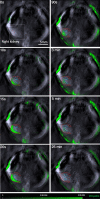

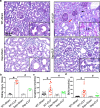
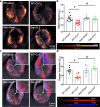

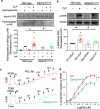
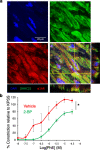
Similar articles
-
Protein palmitoylation regulates extracellular vesicle production and function in sepsis.J Extracell Biol. 2022 Jul;1(7):e50. doi: 10.1002/jex2.50. Epub 2022 Jul 5. J Extracell Biol. 2022. PMID: 38419739 Free PMC article.
-
Palmitoyl acyltransferase DHHC21 mediates endothelial dysfunction in systemic inflammatory response syndrome.Nat Commun. 2016 Sep 22;7:12823. doi: 10.1038/ncomms12823. Nat Commun. 2016. PMID: 27653213 Free PMC article.
-
The Protein Acyl Transferase ZDHHC21 Modulates α1 Adrenergic Receptor Function and Regulates Hemodynamics.Arterioscler Thromb Vasc Biol. 2016 Feb;36(2):370-9. doi: 10.1161/ATVBAHA.115.306942. Epub 2015 Dec 29. Arterioscler Thromb Vasc Biol. 2016. PMID: 26715683 Free PMC article.
-
Targeting palmitoyl acyltransferase ZDHHC21 improves gut epithelial barrier dysfunction resulting from burn-induced systemic inflammation.Am J Physiol Gastrointest Liver Physiol. 2017 Dec 1;313(6):G549-G557. doi: 10.1152/ajpgi.00145.2017. Epub 2017 Aug 24. Am J Physiol Gastrointest Liver Physiol. 2017. PMID: 28838985 Free PMC article.
-
Dynamics of GRK2 in the kidney: a putative mechanism for sepsis-associated kidney injury.Clin Sci (Lond). 2021 Oct 29;135(20):2341-2356. doi: 10.1042/CS20210462. Clin Sci (Lond). 2021. PMID: 34622918
Cited by
-
Exploring the role of palmitoylation in sepsis: mechanistic insights and future perspectives.Mol Med. 2025 Jun 3;31(1):217. doi: 10.1186/s10020-025-01284-5. Mol Med. 2025. PMID: 40461967 Free PMC article. Review.
-
Protein palmitoylation regulates extracellular vesicle production and function in sepsis.J Extracell Biol. 2022 Jul;1(7):e50. doi: 10.1002/jex2.50. Epub 2022 Jul 5. J Extracell Biol. 2022. PMID: 38419739 Free PMC article.
References
Publication types
MeSH terms
Substances
Grants and funding
LinkOut - more resources
Full Text Sources
Other Literature Sources
Medical
Molecular Biology Databases
Miscellaneous

